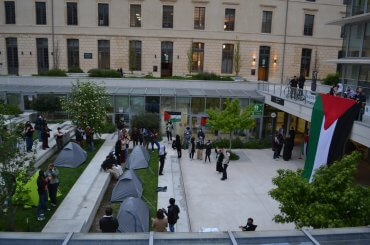In the last decade the number of Palestinian refugees in the West Bank and Gaza has increased by one million, according to a survey conducted by the Palestinian Central Bureau of Statistics (CBS) in advance of World Refugee Day.
Palestinian refugees registered with the United Nations now number 5.6 million people, an increase from 5.3 million the year before. A further 2.7 million unlisted refugees are estimated to be living in the occupied territories and abroad.
The largest share of Palestinian refugees reside in the occupied territories. More than three quarters of the total population of the Gaza Strip, and around one quarter of the Palestinian population in the West Bank, are refugees.
Today, the camps are over populated with narrow streets. Their residents have the highest unemployment rates in Palestinian society (32.3 percent, compared to 21.4 percent unemployment in the general population). A number of refugee camps in the West Bank are located outside Palestinian hubs, in close range to Israeli settlements and in regions under the security control of Israeli forces. In Gaza, a majority rely on food assistance from the United Nations.
https://www.youtube.com/watch?v=y_AuCV3bbAY
Yet basic statistical indicators show the gap between refugees and non-refugees is closing in the West Bank at least. Education rates, home ownership, life expectancy and infant mortality are about on par with the general public.
The Palestinian refugee crisis began in 1948 when more than 700,000 people fled or were forcibly displaced during the Arab-Israeli war, known by Palestinians as the Nakba. By 1950 the number of displaced persons rose to more than 900,000, or 66 percent of the then total Palestinian population.
In the nearly seven decades since the start of the refugee crisis, the number of refugees has grown fivefold. That increase has made Palestinians largest single national group of refugees in the world. But they are not counted in the same category as traditional displaced persons.
Palestinians are excluded from the record of the 16 million refugees registered with the United Nations High Council of Refugees. They are uniquely administered under a special department, the United Nations Relief Works Agency.
Palestinian refugees are further scattered across the region. Jordan hosts 39.6 percent of the refugee population, with another 10.6 percent (as of January 2015) in Syria, and 8.8 percent in Lebanon.



“Palestinians are excluded from the record of the 16 million refugees registered with the United Nations High Council of Refugees. They are uniquely administered under a special department, the United Nations Relief Works Agency”.
Thanks, Allison~ i’ve never been fully apprised of this. Perhaps it is part and parcel of the root of the problem… this separateness.